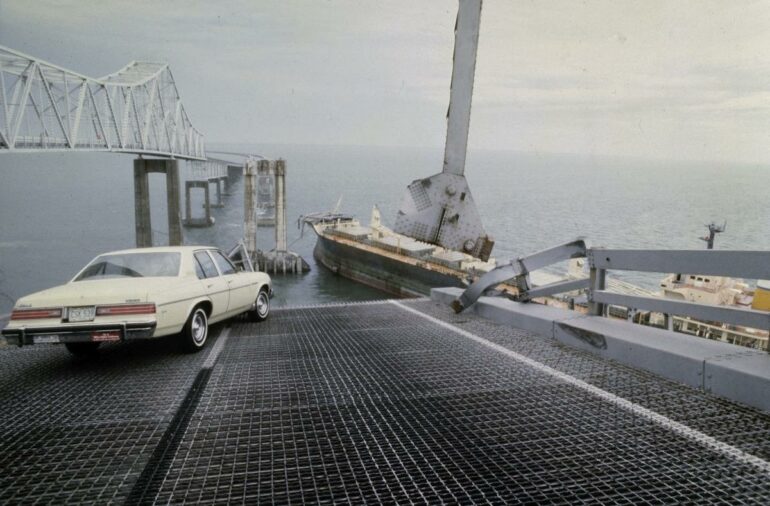The MV Dali, a 984-foot, 100,000-ton cargo ship, rammed into the Francis Scott Key Bridge when leaving Baltimore harbor on March 26, 2024, causing a portion of the bridge to collapse.
In an interview, University of Michigan civil engineer Sherif El-Tawil explained how often ships collide with bridges, what can be done to protect bridges from collisions, and how a similar disaster in Florida in 1980 – just three years after the Key bridge opened – changed the way bridges are built.
This is not the first time a ship has taken out a bridge. What’s the history of ship-bridge collisions?
This is an extremely rare event. To my knowledge, there are about 40 or so recorded events in the past 65 years that involved similar type of damage to a bridge caused by a ship. So they seem to occur on average about once every one and a half to two years around the world. When you consider that there are millions of bridges around the world – and most of them cross waterways – you can imagine how rare this is.
The most influential case was the 1980 Sunshine Skyway Bridge collision in Florida, which prompted the federal government to take action in terms of developing guidelines for designing bridges for ship collision. By the early 1990s the provisions were developed and incorporated into the bridge design code, the AASHTO specifications. The American Association of State Highway and Transportation Officials produces the design code every bridge in the United States must conform to.
What was different about the Sunshine Skyway Bridge disaster from previous bridge collisions?
There were casualties. The fact that a crash could bring down a bridge, just like in the Baltimore situation, prompted the concern: Can we do something about it? And that something was those specifications that came out and eventually became incorporated in the national design document.
What those specifications say is that you either design the bridge for the impact force that a ship can deliver or you must protect the bridge against that impact force. So you must have a protective system. That’s why I was surprised that this bridge did not have a protective system, some type of barrier, around it. I have not examined the structural plans of this bridge. All I could see is the pictures that were published online, but protective systems would be very visible and recognizable if they were there.
The Sunshine Skyway Bridge disaster in 1980 prompted improvements in bridge safety.
What is currently mandated for new bridge construction, and is it sufficient to handle today’s massive cargo ships?
I estimate, based on the published speed and weight of the MV Dali, that the impact force was in the range of 30 million pounds. This is a massive force, and you need a massive structure to withstand that kind of force. But it is doable if you have a huge pier. That might dictate the design of the bridge and…



